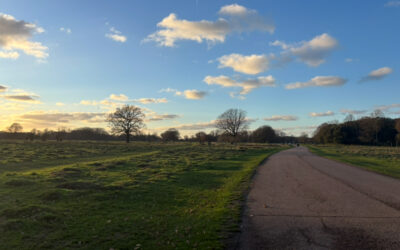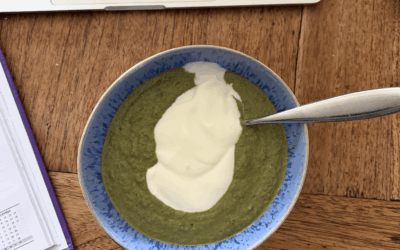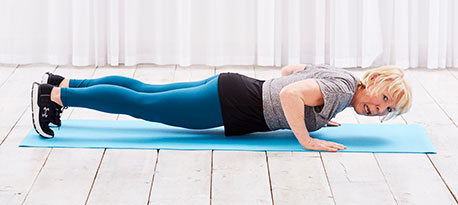Many of you followed me on Instagram during my recent 4 day trip walking The St Cuthbert’s Way (100km in Border country up north) and it seems my enthusiasm for plodding along in the outdoors has is contagious. You want to know more. So here are my tips for a very successful walking break, whatever the weather,
WHERE
You can walk anywhere with a map or find a circular route on the internet, print off the instructions and off you go. It doesn’t have to be anything big, but it’s a brilliant way of seeing a local area, of keeping fit and maintaining some mental calm. If you want to do some serious day-after-day walking, then there are National Trails (e.g Pennine Way, South West Coast Path etc ) and these are usually well way-marked by the sign of the acorn. There are also Long Distance Paths (e.g the St Cuthert’s Way) and these can take anything from a weekend to a week. Some are better way-marked than others but if you have instructions from a book then that will help. You can easily plot the route yourself and book B&Bs along the way according to how long you think you can walk in any one day, remembering that you have to get up and do the same the next day. And the day after that.
Or you can get a company to book it all for you. This is what’s called a self-guided holiday. They’ll book the accommodation, hand you the route and maps and off you go for the day, meeting up with the rest of the group at the pre-booked accommodation each night. There are masses of companies which can do this ( macsadventure.com, mickledore.co.uk are examples).
CLOTHING
Dull as it sounds, it’s your kit which is going to make such a difference to your enjoyment.
Footwear: Waterproof best, unless you’re walking in the heat of Spain and can guarantee no rain. One whole piece of leather is best, rather than lots of seams (anything over about 100 quid) boots or shoes, up to you. Usually one half size bigger than your normal shoe size but they shouldn’t be too big, otherwise your foot moves around and you get blisters. I’ve been there. Eurgh!
Socks: You’ll have to experiment but I have a vast range.
Trousers/shorts: I always wear shorts in the Summer. I’d rather get my legs wet than clothing. Trousers will protect you from nettles and brambles though. Old workout leggings are fine, you don’t have to buy specialist walking trousers. Waterproof trousers are a good idea for putting on top when it lashes down, especially in the winter. Not the most alluring of items but worth it. Cheap ones like Peter Storm are fine.
Tops: Anything to wick sweat away. Merino wool base layers are good (and light to carry).
Jacket: In Summer a lightweight 100% waterproof jacket. In Winter, the same waterproof plus a lightweight down jacket underneath or a heavyweight waterproof jacket. Expect to pay around £100 for a lightweight waterproof and upwards of £200 for a heavyweight. You’ll never regret it and they last years.
Neck/ears: Quite useful is a bandana type thing which can protect neck and ears from wind (and keep your headphones in place when you fancy a song or two to help you up the endless hills). Also double as a mask for when you hit the cafe at the top of the mountain.
Head: Any favourite hat, the more wool in it the better.
Gloves: Again, chuck money at them. Waterproof gloves (or old skiing gloves are perfect) preferably. Black Diamond is a very good brand. Make sure you can pull your hand out of them without dragging the lining out as well.
Pants: This is going to sound weird, but it makes such good sense. If you’re female and likely to need a few wee stops along the way, then before you set out put a panty-liner in. This avoids the need to litter the countryside with bits of toilet paper/
KIT
Rucksack: I have a large haversack (25 litre) for carrying my stuff on long walks (when we’re not having luggage moved on) and I also have a day pack which is smaller to carry food and maps. Don’t be tempted to get cheap. It should have a waist band to clip round your waist so that the weight of the bag can rest on your hips rather than round your neck.
Bum bag: I also wear a bumbag to keep phone in (for photos) and headphones. Sometimes I want the next chapter of my book rather than the sound of my own puffing going up the hill.
Poles: I have poles but hardly ever use them. Some people swear by them for helping them get up (and down) hills but my sister has lost 3 pairs now, simply by putting them down and forgetting to pick them up again. I use it regularly as ammunition!
Waterproof map holder: Essential. You can also get the OS app on your phone to work out where you are and to follow small sections of map which you can download. I think it costs about £25 a year. But a map gives you a bigger picture.
Things inside rucksack: Bum mat (or old carrier bag) to sit on; torch ; plasters; safety pins (for pinning wet washing to your haversack which can dry as you walk along), lip salve, phone charger pack, food (see below), at least 1.5 litres of water, paracetamol, a large carrier bag (or specialist drybags) to put your clothes and spare kit inside your rucksack should it pour down with rain; insect bite cream, torch, head torch, sun cream, tissues, hand sanitiser, compass (useful, so long as you know how to use it); heat gel for sore muscles at the end of the day; tennis ball to sit on to unblock your glutes!
FOOD
If you’re staying at B&Bs, then eat as much as you can stuff down at breakfast. Keep some snacks in your rucksack to nibble along the way if you think you might not be able to stop anywhere for lunch. Pouches of fruit and nuts are good, protein bars, apples. If you want full-on lunch, then the obvious are sandwiches and wraps to fill your boots, which the B&B can make for you or you come across a lovely deli. Continuous movement with large muscles (your legs!) is going to make you very hungry especially if there are hills involved.
I’m sure I’ve forgotten something, so if I have, please do ask.
Annie
x





